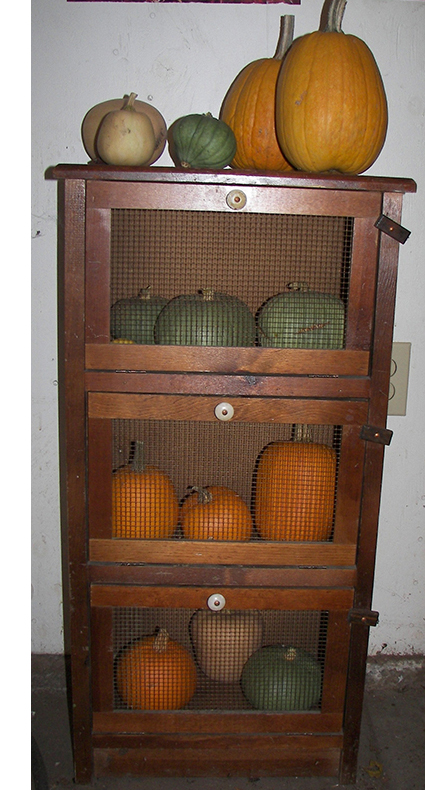by Birgitt Evans, ABG Board member and Master Gardener
 When my future husband and I rented a house in Alameda 30 years ago, I suddenly had more sunny land than I had ever imagined. And I went hog wild, planting every inch of it with dozens of tomato and cucumber plants and six colors of Hopi flour corn. It all grew and produced gloriously. My Christmas card that year was a cornucopia of colorful produce spilling out of a bushel basket. Alas, it was way more food than two people could eat and a lot of it went to waste.
When my future husband and I rented a house in Alameda 30 years ago, I suddenly had more sunny land than I had ever imagined. And I went hog wild, planting every inch of it with dozens of tomato and cucumber plants and six colors of Hopi flour corn. It all grew and produced gloriously. My Christmas card that year was a cornucopia of colorful produce spilling out of a bushel basket. Alas, it was way more food than two people could eat and a lot of it went to waste.
When I visited Sweden as a girl, my uncle was delighted to introduce me to a word that tiny Sweden has that English does not possess: lagom. Lagom translates to ‘just right’. With the ever more evident effects of climate change, there is a great deal of concern about greenhouse gas emissions, most of which has focused on automobiles. However, according to Jeanne Nader of StopWaste, “Food waste is equal to the emissions from 33 million passenger vehicles (annually).” (California has 14 million passenger vehicles.) So it is important that what we grow in our vegetable gardens is lagom so that there is no waste and no greenhouse gas emissions.
How to begin? Start with pen and paper or a spreadsheet and take stock. Look at how many people there are in the household and what everyone likes to eat. Think about what you actually eat; does your family eat salad once a day, once a week or once a month? Consider staples and vegetables with a long shelf life. In a backyard, you will probably never be able to grow more garlic, onions, potatoes, carrots or winter squash than your family can eat, since these vegetables will store for several months. On the other hand, it is easily possible to have too much lettuce or zucchini ripen at the same time. And while you can grate and freeze zucchini, there is no way to store excess lettuce.
As a gardener, you are ruled by the seasons. You can coax broccoli from the garden year round, but tomatoes, peppers and cucumbers have a defined season and you should count on them being available fresh for only part of the year. This is wonderful, because it allows you to experience new foods in all four seasons. Right now I am looking forward to the return of peas, broccoli and cauliflower.
To help you marry your desired amount with your garden space, Cindy Conner created a handy table of how much of a given vegetable you can grow in 100 square feet and the number of half cup servings of each vegetable that a pound will yield.
Looking at her chart, if you have 2 people in the household and want broccoli once a week for 6 months, you will need 52 servings and would need to devote a little over 50 square feet to succession crops of broccoli, assuming that your plants produce at the low end of the range of 33 – 46 pounds per 100 square feet. Calculate pounds needed by dividing 52 servings by 3.1 servings per pound = 16.77 pounds. Half of 33 is 16.5, so at a minimum, you should have your 52 servings.
Keeping a journal will also help. You can look back and see that you had way too many cucumbers in July and none in September. Then you will want to plant fewer plants in May and add a succession crop of cucumbers in June to keep you in cucumbers through September. Initially, you may find that things don’t work out as planned and that will give you the happy opportunity to can food or to share with your neighbors and possibly create a small, local food network.
Eventually though, you will get better at knowing how much of each crop to plant. You will also come to know what you value the most from your garden. If you love greens, a couple of 2 x 12 foot planter boxes can keep you in greens all year round with some radishes, cucumbers and tomatoes thrown in during the summer. I value the keepers and grow as much garlic and as many onions and winter squash as I possibly can in the summer to take me through into the lean winter months.
With some planning and practice, you can make your vegetable garden work for you, producing just the right amount of produce for your family and eliminating waste. Nineteen percent of the waste that winds up in Alameda County landfills is uneaten food. With some practice and planning, together in our gardens, we can grow just the right amount and feed ourselves without adding to greenhouse gas emissions.
